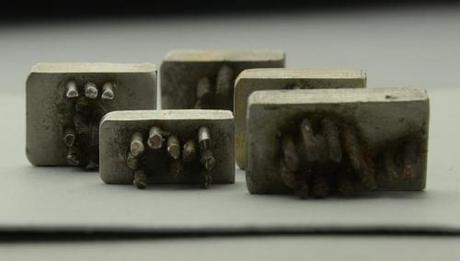Auschwitz Acquires Stamps Used to Tattoo Prisoners

Rare metal stamps used by the Nazis to tattoo prisoners at the infamous Auschwitz-Birkenau death camp have surfaced in Poland.
A donor insisting on anonymity handed over the stamps to the memorial museum at the site of the World War II-era camp in Oswiecim, southern Poland.
"We obtained the stamps a couple of weeks ago and have confirmed their authenticity," Bartosz Bartyzel, a spokesman for the museum, told Agence France Presse on Thursday.
"There are five stamps including one zero, two threes and two sixes or nines," he said, adding that Auschwitz was the only Nazi German camp to use tattoos to identify prisoners.
The find is rare. The only other known tool to tattoo camp prisoners is stored at the Military Medical Museum in Saint Petersburg, according to the Auschwitz museum.
The stamps were discovered in the "area of one of the evacuation routes" the Nazis used in January 1945 to move tens of thousands of prisoners to the west of Auschwitz as Soviet troops zeroed in on the camp from the east, Bartyzel said.
The routes stretched 50 to 60 kilometers (30 to 35 miles) north and south from the camp to the towns of Gliwice and Wodzislaw, according to a map on the museum website.
The museum said it would not be providing further details, to preserve the donor's anonymity.
After invading Poland in 1939, Nazi Germany set up the camp at a former army barracks in the city of Oswiecim, or Auschwitz in German.
It has become an enduring symbol of Germany's genocide of European Jews. One million were killed there from 1940 to 1945.
More than 100,000 others including non-Jewish Poles, Roma, Soviet prisoners of war and anti-Nazi partisans also died at Auschwitz.
"As the number of survivors dwindles, this kind of discovery is invaluable. It's a testimony to what happened here," Bartyzel said.
The Nazis began using tattoos when other methods of identifying prisoners -- including numbered uniforms -- failed, Bartyzel said.
Soviet prisoners of war were the first to get tattooed in 1941. The practice was expanded to the rest of the camp the following year.
The Nazis pressed the needle-studded plates into an inmate's skin, before rubbing ink into the wound to create the tattoo. They first tattooed chests, then later left forearms.
The stamps will be stored in the museum's archives before going on display in a few years in a new exhibition.



